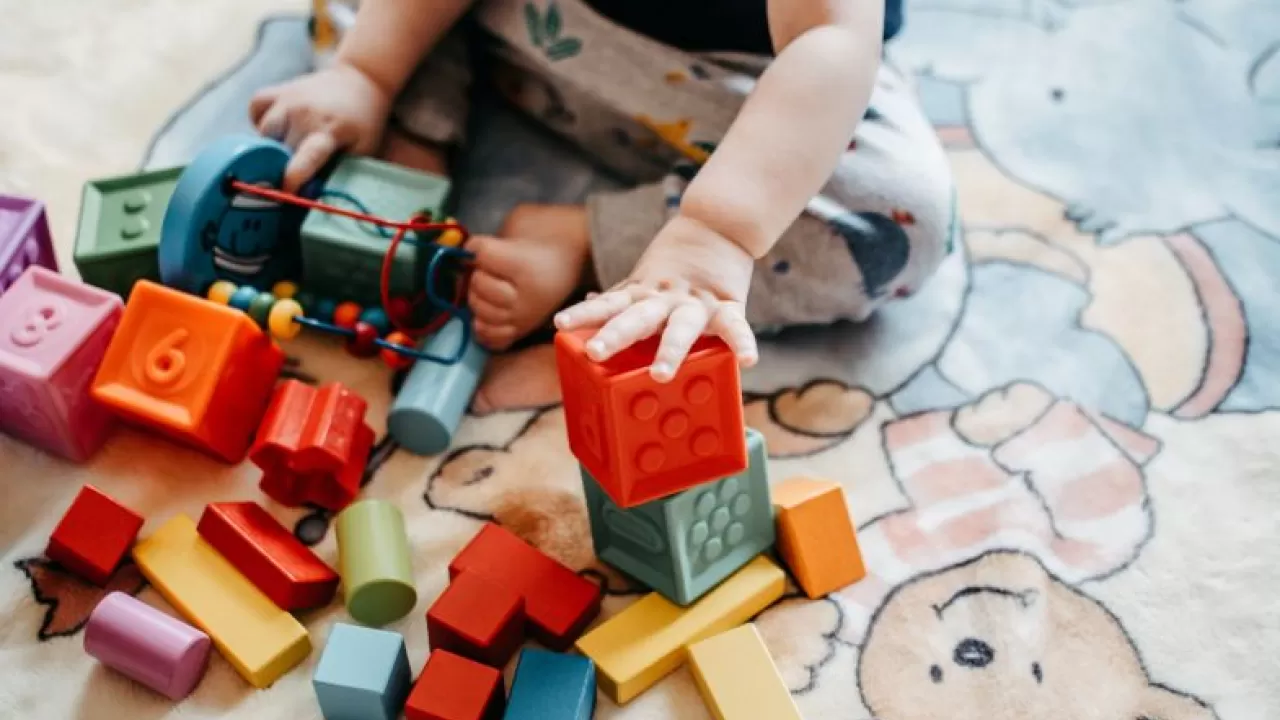
Page content
We have already written a blog about how brain development works. At that time, we discussed the theoretical knowledge we have about brain development, about strengthening or weakening of brain connections, for example. In this blog we want to tell you more about how we use this knowledge to stimulate babies to develop and grow. We’d like to invite you to read along.
Brain connections
How does brain development and brain connections work? Brain connections are made early on, even before birth. The more a brain connection is activated, the stronger it becomes. Practice makes perfect, literally! Connections that are stimulated through experience remain, unused connections disappear again. A frequently used connection is faster and stronger. This is how babies develop and get to know the world.
Stimuli at the baby group
With this knowledge of brain development in babies, we focus on early development in the groups, since the brain needs external stimuli in order to activate brain connections. A stimulus is something children experience with their senses. That’s why we think it’s important to provide energizing stimuli in the group environment for babies. With these stimuli we challenge your baby to grow and develop further.
A concrete example of this is the surface on which babies lie. A hard surface allows them to move more easily. When babies have more room to move, they can explore their surroundings better and therefore encounter more stimuli. We also provide space for them to crawl and take their first steps. Babies make new discoveries this way. The world literally grows bigger step by step.

Challenge and rest
We work with a daily rhythm that alternates between activity and rest. We repeat activities, causing brain connections to become stronger and last. Compare this to a path through a field of grass. Walking back and forth on the same patch of grass over and over again creates a permanent path. We do the same with activities. We repeat stimuli or activities in such a way that children become familiar with them.
In this respect, it’s important to maintain a balance between challenging stimuli and rest. We do this, for example, by providing a place to play quietly and make discoveries. This place is located away from a walking route. In this way, the babies' involvement in their play remains high. On the other hand, we keep the peace and quiet in the group by not having a radio on and by providing a warm atmosphere and lighting. This balance allows babies to focus their full attention on their own play.
Connecting to the baby’s perception
Because babies in the group can play and explore on their own in a safe environment, they gain different experiences, which we like to stimulate. We stay as close as possible to the babies' perceptions. We do this by playing together: we play along, show and give words to the games babies play. By doing so, we make sure your baby gets different experiences. To further stimulate this, we provide plenty of choice. We pick challenging materials from the toy boxes and place them on the floor. Children can then choose for themselves what they will play with and be challenged by it.
In this way, we contribute to the development of the child's brain and thus to the first steps in his or her journey of discovery, enabling your child to grow and, above all, discover a lot.
How things work at our location
Do you have a question about how we deal with child development at your childcare centre? You can always contact the pedagogical staff member at your child's group.
Tip: webinar Jantje Beton about brain development
On Wednesday 10 March at 8.30 pm, Professor Erik Scherder and Jantje Beton will share his knowledge of the effect of playing and moving on brain development. Why is it so important for children to play? What does playtime do to their brains?
Professor Scherder (1951) is professor of neuropsychology and affiliated with the VU University Amsterdam and ambassador of Jantje Beton. You can register to this webinar before March 8 via this link. Note: The webinar will be in Dutch.